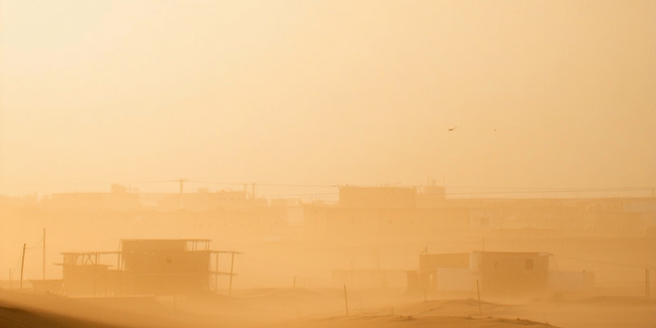
Understanding Sandstorms and Their Impact
Sandstorms, also known as dust storms, are meteorological phenomena common in arid and semi-arid regions. These storms occur when strong winds lift large amounts of sand and dust from bare, dry soils into the atmosphere. The particles can be carried over large distances, impacting areas far from their source. Sandstorms not only reduce visibility but also pose serious health risks, especially respiratory problems, due to the fine particles they carry. They can also cause damage to infrastructure, contaminate water supplies, and adversely affect crop production. Understanding the mechanics and impacts of sandstorms is essential for developing effective mitigation measures. By predicting their occurrence, people can be better prepared to minimize risks and ensure safety. Education, early warning systems, and international cooperation play critical roles in managing their impact effectively.
Importance of Protective Gear
Wearing appropriate protective gear is crucial during sandstorms to safeguard against health risks and ensure visibility. A key component is a high-quality mask, like an N95 respirator, which can filter out harmful fine particles. Goggles are essential to protect eyes from irritants and prevent damage from blowing sand. Also, wearing long-sleeved clothing and hats can help prevent skin exposure. Sealing clothing gaps will reduce discomfort and further protect the body’s largest organ. Protective gear not only minimizes respiratory risks but also reduces the chances of physical injuries caused by flying debris. Ensuring these items are part of personal emergency preparedness kits is vital for regions prone to sandstorms. Moreover, knowing how to use protective gear effectively ensures that individuals can respond swiftly and safely when faced with sudden sandstorm conditions.
Home Preparation and Sealing Techniques
Preparing your home to withstand a sandstorm starts with effective sealing. Close all windows and doors tightly; use weather stripping to seal gaps and prevent sand from entering. Install airtight windows if residing in frequently affected areas. Cover vents and openings with durable plastic or sealed fabric to block entry points. It is wise to maintain an indoor air purifier capable of filtering fine particles, enhancing indoor air quality during storms. Reinforcing homes with protective doors or shutters further minimizes sand and wind intrusion. Sandbag deployment can protect low-entry points. Ensuring that emergency supplies, such as water, non-perishable food, and medications, are readily available is crucial for extended periods indoors. Regular home inspection and maintenance heighten a dwelling’s resilience against sandstorm impacts, enhancing safety for all inhabitants during severe weather events.
Vehicle Protection Tips
Protecting vehicles during a sandstorm involves several strategies to minimize damage and maintain functionality. Parking in a garage or covered area is ideal, as it guards against sand abrasion and mechanical damage. If shelter is unavailable, cover the vehicle with a specialty car cover designed to withstand wind and sand. Ensure that all windows are closed tightly to prevent interior contamination. Regular maintenance, including air filter checks and replacements, is essential to sustain engine performance and air quality control. Applying protective wax on the vehicle’s exterior enhances the paint’s durability against abrasive conditions. Keeping the fuel tank full reduces condensation risk, while checking tire pressure ensures stability on gritty surfaces. These proactive steps preserve vehicle integrity, safeguarding investment, and ensuring mobility in the face of adverse sandstorm conditions.
Health Precautions and Emergency Resources
Health precautions during a sandstorm focus on minimizing airborne particle exposure and being prepared for emergencies. Stay indoors during high-intensity sand storms, avoiding exposure to harmful particulates. If outside, wearing masks and protective goggles can significantly reduce respiratory and eye irritants. Consuming adequate water helps counteract dehydration caused by arid conditions. Be alert to government or health advisories for updates or warnings. Secure access to emergency resources such as medical kits and necessary medications, which are crucial for managing health in sandstorm-prone regions. Awareness of symptoms from exposure, like respiratory distress, ensures prompt medical intervention if needed. Community programs often provide emergency response resources; knowing their contact and services greatly aids preparedness. Proactive measures enhance safety and health security amidst the challenges posed by sandstorms.
Community and Government Initiatives
Community and government initiatives play a pivotal role in mitigating the adverse effects of sandstorms. Public education campaigns aim to raise awareness of potential risks and safety measures to adopt during sandstorm events. Governments often establish early warning systems that notify citizens about approaching storms, allowing for adequate preparation time to safeguard lives and property. Investment in vegetation projects, like planting trees and ground cover, helps stabilize soil, reducing dust mobilization. Collaboration with international bodies for research and technology exchange enhances predictive capabilities and fosters new protection techniques. Community-driven programs, including workshops on personal and home protection methods, are valuable for spreading knowledge and equipping citizens with necessary skills. Through coordinated efforts, the collective resilience against sandstorms is strengthened, mitigating both immediate and long-term impacts on affected regions.
